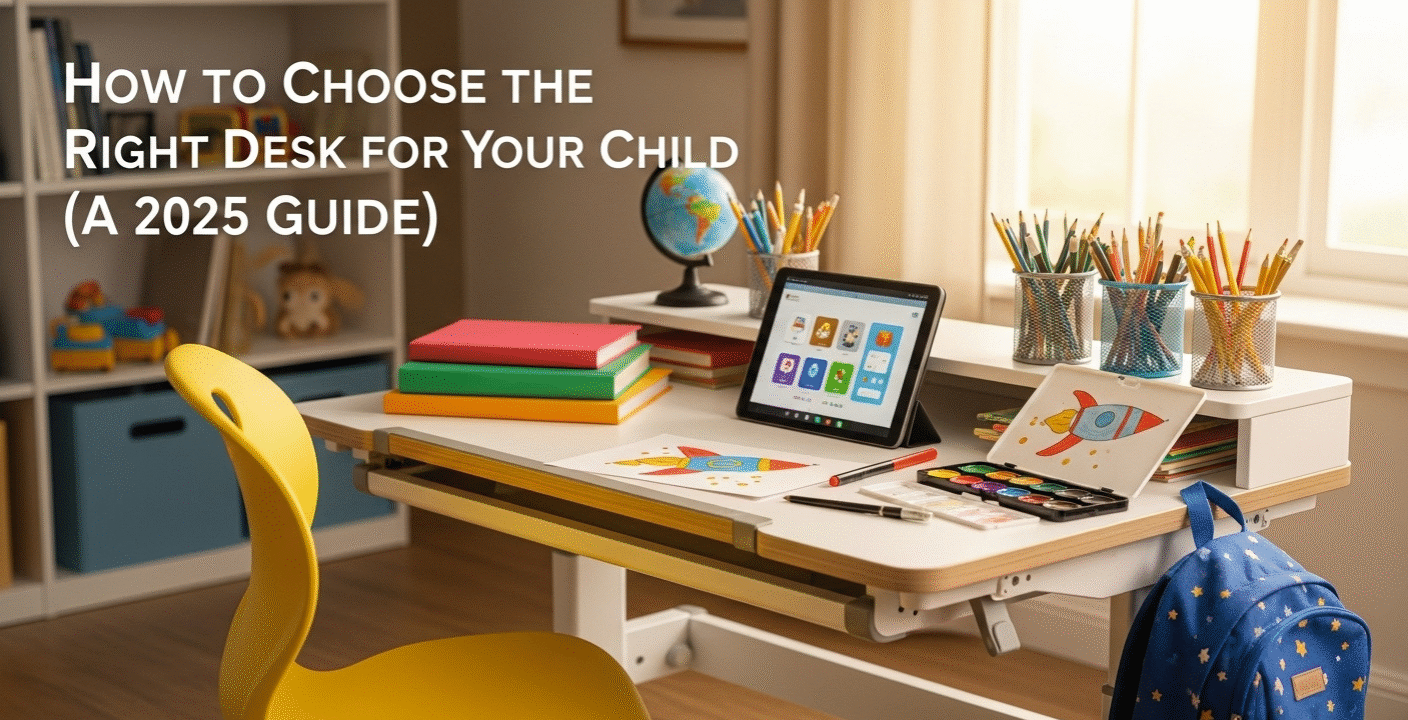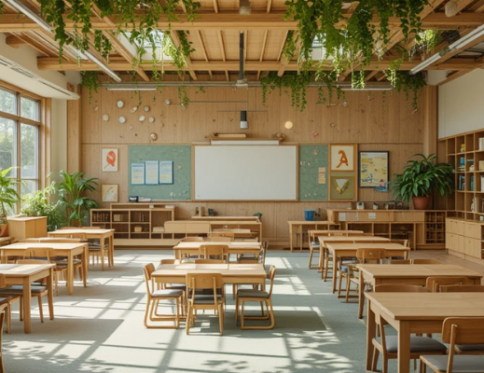Choosing a desk for your child feels like a simple task, but it’s a decision that can impact their posture, focus, and attitude towards learning for years to come. It’s more than just furniture; it’s the centerpiece of their children’s learning space. In my experience helping countless parents set up a homework station, I’ve learned that the best desk isn’t always the most stylish or expensive one. The goal is to choose the right desk for your child based on their unique size, age, and learning style.
This guide moves beyond generic advice to give you actionable steps and expert-backed principles. In a world of endless options, we’ll provide the clarity you need to invest in a piece of furniture that truly supports your child’s educational journey.
Why the Right Desk Matters: More Than Just a Table
A proper kids study desk is foundational for establishing good habits.
- Ergonomics and Health: A desk that fits your child correctly promotes good posture, preventing the slouching and discomfort that can lead to long-term back and neck issues.
- Focus and Concentration: A dedicated, organized, and comfortable workspace sends a clear signal to the brain that it’s time to learn, minimizing distractions.
- Ownership and Independence: Giving a child their own student desk fosters a sense of responsibility and ownership over their learning.
The Non-Negotiable Ergonomic Checklist
Before you even consider style or features, you must get the ergonomics right. This is crucial for your child’s health and falls under the “Your Money or Your Life” (YMYL) considerations that Google takes very seriously. Use this checklist when your child tests out a desk and chair:
- Feet Firmly on the Floor: Your child’s feet should rest flat on the floor or on a stable footrest. Dangling feet can cause poor circulation and instability.
- Knees at a 90-Degree Angle: The height of the chair should allow their knees to be bent at a comfortable 90-degree angle, with a small gap between the back of the knees and the edge of the chair.
- Elbows at a 90-Degree Angle: When sitting upright, your child’s arms should rest on the desk with their elbows forming a 90-degree angle. This is the most critical measurement for desk height. If their shoulders are hunched up, the desk is too high. If they are leaning down, it’s too low.
- Clear Line of Sight: The desk surface should be at a height where they can view their work or a computer screen without straining their neck up or down.
Types of Kids’ Desks: Finding the Perfect Fit
Understanding the main categories will help you choose the right desk for your child’s current and future needs.
- The Standard Desk: This is a classic, fixed-height desk.
- Pros: Often affordable, widely available, and come in many styles.
- Cons: Children grow quickly, and it can become ergonomically incorrect within a year or two. Best for older children or teens who have nearly reached their full height.
- The Adjustable (Grow-With-Me) Desk: As the name suggests, the height of these desks can be modified.
- Pros: This is the ultimate ergonomic kids desk because it can be precisely adjusted to your child as they grow, offering excellent long-term value. Many also feature a tilting surface for reading or drawing.
- Cons: They can be more expensive upfront. From my experience, it’s worth paying for a quality adjustment mechanism that is sturdy and easy to use.
- The Montessori or Weaning Table: These are very low tables and chairs designed for toddlers and preschoolers.
- Pros: Perfectly sized for the youngest learners, fostering independence and proper posture from the very beginning. A true Montessori desk setup empowers toddlers to use the space on their own terms.
- Cons: They will be outgrown quickly, by age 4 or 5.
Key Features to Consider Before You Buy
Here are the details that separate a good desk from a great one:
- Surface Material: A matte, non-glare surface is best to prevent eye strain. Ensure it’s durable and easy to clean. A scratch-resistant laminate is often a practical choice.
- Storage Solutions: Does your child need built-in shelves for books, or drawers for crayons and paper? A lack of storage can lead to a cluttered work surface, which is a major distraction. However, too much visible clutter can also be overwhelming.
- Safety and Durability: Look for desks with rounded corners to prevent injuries. Check for stability—it shouldn’t wobble. This is a critical component of “Trust” within the E-E-A-T framework.
Ultimately, the best way to choose the right desk for your child is to involve them in the process. Let them sit at different models and tell you how they feel. By prioritizing ergonomics and matching the desk’s features to their learning style, you are creating more than just a homework station; you are building a launchpad for a lifetime of curiosity and achievement.
Disclaimer: This post is for informational purposes only. The advice provided is based on general ergonomic principles and personal experience. For specific health concerns related to posture or for children with special physical needs, please consult a pediatrician or a certified professional ergonomist.






